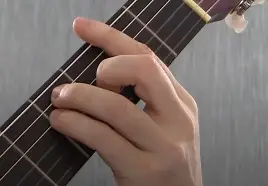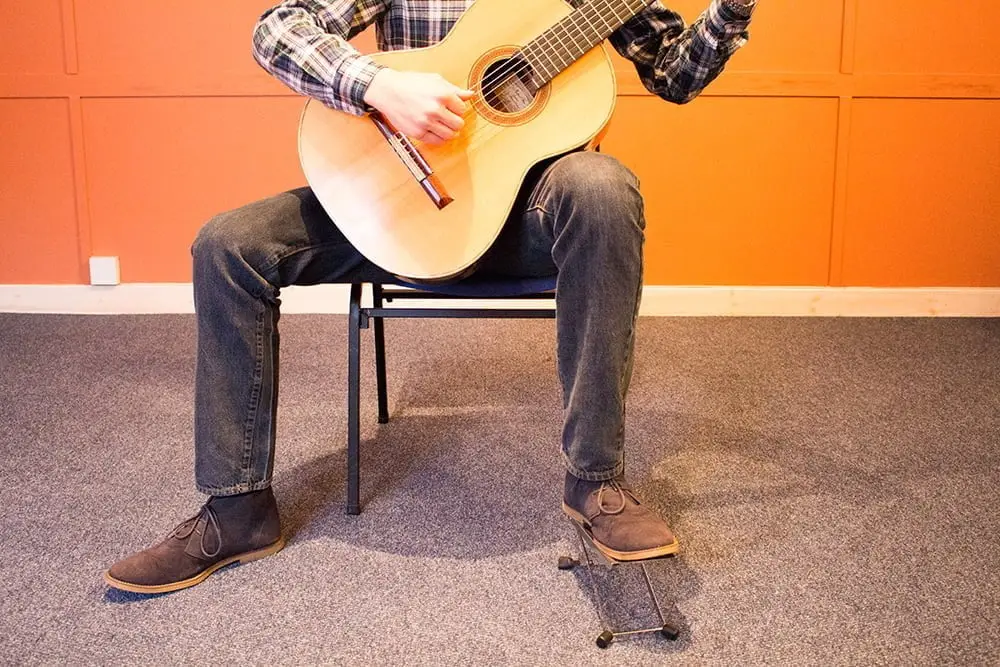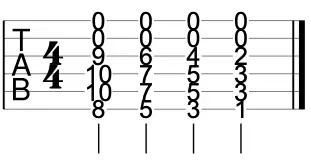Are you struggling to play barre chords cleanly—without buzzing or feeling like your hand is going to cramp up before you finish the first measure? You’re not alone. Barre chords are notoriously challenging, especially on acoustic guitars. But don’t let that discourage you. With focused practice and the right techniques, you can conquer barre chords and open up a whole new world of playing possibilities. Here’s how to get started:

Build Calluses for Better Grip
The side of your first finger closest to the thumb plays a crucial role in playing clean barre chords. Developing calluses on your fretting hand is essential because tougher skin requires less pressure to hold down the strings. You can speed up this process by gently rubbing the side of your index finger on the strings for around a minute each day. You can do this in 10-second intervals placed between your other practice items. Be cautious not to overdo it, as excessive friction will heat up your skin and can cause pain.
Start with Open Chord Shapes
Before diving into full barre chords, practice common open chord shapes without using your index finger. Focus on the following shapes:




Having Your Guitar In The Proper Positon Is Essential. You want to imitate a classical guitar player anytime you are working on something difficult, that means:
- Seated Position: Classical guitarists typically sit on a chair or bench with no armrests to allow free arm movement. Their posture is upright but relaxed, with their back straight and shoulders level.
- Foot Placement: A footstool is often used to elevate the left leg (for right-handed players). This positions the guitar in an ideal playing position. The footstool height is adjusted so that the guitar’s body rests comfortably on the left thigh.


- Guitar Positioning:
1. The guitar’s lower bout (the widest part of the body) rests on the left thigh.
2. The neck is angled slightly upward, usually around 45 degrees, to facilitate better access to the fretboard.
3.The back of the guitar is lightly supported against the player’s chest and stomach.
- Headstock Alignment: The headstock is typically around shoulder height or slightly higher, depending on the player’s preference and anatomy.
This is the same position that rock players achieve by placing their foot on the monitor at the front of the stage during a difficult solo. Yes, this looks cool, but it also serves a purpose.
F Shape (6th String Major Barre Chord)
The F shape, also known as the sixth-string major barre chord, is an excellent starting point. Once you become comfortable with this chord, making the minor adjustments needed to play sixth and fifth string minor chords is straightforward. The fifth string major barre chord poses a unique challenge because you need to bar with two fingers. To begin working on the 6th string major barre chord, start by:
- Adding the Index Finger on the 6th String: Instead of trying to form the full barre chord immediately, place your index finger on the 6th string while leaving the top two strings open. This creates a unique sound used by bands like Rush and Dream Theater. Get comfortable playing and moving this shape around the neck before you move on to the next step.

- Adding the Barre Last: Position your other fingers first to form the chord shape, then add the barre with your index finger. The barre doesn’t require a death grip—just a slight press using the side of your index finger.

- Start at the 5th Fret: Avoid beginning on the first fret, as it’s the most challenging spot due to higher string tension. The fifth fret offers a more manageable starting point if your guitar is properly set up.
- Use the Weight of Your Arm: Instead of squeezing the neck with excessive force, use the natural weight of your arm. Make sure your shoulder is relaxed, and your elbow can move freely. If you cannot do this, it means you are too tense and cannot take advantage of the dead weight of your arm naturally pulling back on the strings. This reduces strain and makes it easier to press the strings. Make sure you do not let your arm hang so heavy that you bend the strings.
Proper Hand Position
Here are a few tips to ensure your hand position is optimal:
- Thumb Placement: Keep your thumb lined up behind your middle finger on the back of the neck in what’s known as the “hitchhiker position.”

- Finger Arching: Ensure your fingers (other than the barre finger) are arched to avoid muting adjacent strings. Relax your hand, gently press down, and stop if you feel too much tension. It is more important to get used to the feel of good hand position than playing the perfect-sounding chord when you are just getting started.
Practice Switching Between Barre Chords
Transitioning smoothly between barre chords is another challenge. Here’s how to practice effectively:
- Isolate Your Hands: Practice the motions of your fretting hand separately. Use a metronome and focus on switching to the barre shape without strumming.
- Add the Picking Hand: Once you feel confident with your fretting hand, incorporate your picking hand. Strum in perfect time, even if the chord isn’t entirely clean at first.
- Alternate Practice Modes: Spend a few minutes alternating between fretting-only practice and full strumming practice. This builds muscle memory and control.
Final Thoughts
Barre chords might seem daunting at first, but with patience and persistence, they’ll become a natural part of your playing. Remember to focus on finger positioning, hand relaxation, and consistent practice. Before you know it, you’ll be playing barre chords cleanly and effortlessly—and your hand won’t even break a sweat!
About The Author
Brian Fish is a professional guitarist who has been dedicated to helping other guitar players in Northeast Ohio pursue their musical dreams since 1994. He’s passionate about guiding others on their musical journey! He is the Guitar Playing Transformation Specialist, instructor, mentor, trainer, and coach at
Guitar Lessons Geauga.
Brian has also assisted people from around the globe in developing a solid sense of timing and enhancing their creativity through the fantastic rhythm course, “Ultimate Rhythm Mastery,” available at MusicTheoryForGuitar.com.
If you live in Geauga County / North East Ohio, Guitar Lessons Geauga can help you become the player you’ve always wanted to be.

